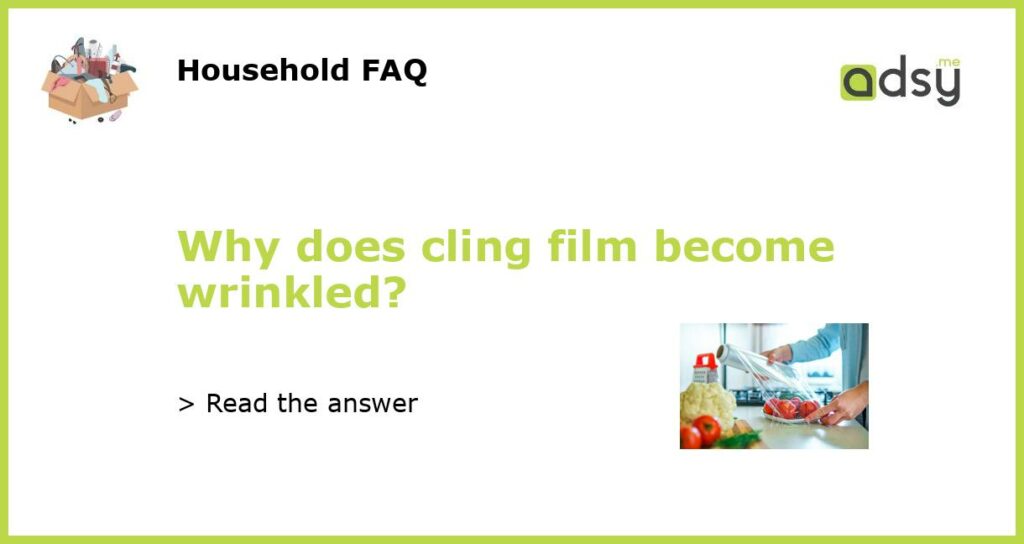What is Cling Film?
Cling film, also known as plastic wrap, is a transparent thin film typically made of polyethylene. It is used for food packaging, covering bowls and dishes, and keeping food fresh.
Why Does Cling Film Become Wrinkled?
Have you ever noticed that the cling film that once looked tight around a bowl of food becomes wrinkled and loose after some time? This happens due to a phenomenon called “creep” – a gradual deformation of the plastic under stress or pressure. When you stretch the cling film, its molecules get elongated and tend to return to their original, relaxed shape. Over time, these molecules slowly return to their original shape, causing the film to lose its tightness and become wrinkled.
How Can You Prevent Cling Film From Wrinkling?
If you are tired of dealing with wrinkled cling film, there are a few things you can do to prevent it from happening. First, try using a heavier-duty cling film that is less prone to creep. Second, make sure that you are stretching the film and wrapping it tightly around the container, leaving no air gaps. Lastly, avoid putting cling film in the refrigerator or freezer, as the cold temperature can cause it to become brittle and prone to cracking.
Are There Eco-friendly Alternatives to Cling Film?
Although cling film is convenient, it is not the most eco-friendly option. Luckily, there are plenty of alternatives to cling film that are better for the environment. Beeswax wraps, silicone lids, and reusable containers are all great options that can be used time and time again. Not only do these products reduce waste, but they also save money in the long run.
The Bottom Line
Cling film is a useful product that is prone to wrinkling due to the phenomenon of “creep.” By selecting a heavier-duty cling film, wrapping it tightly around the container, and avoiding exposure to cold temperatures, you can prevent wrinkling. However, there are eco-friendly alternatives to cling film, such as beeswax wraps and reusable containers, that are better for both the environment and your wallet.






